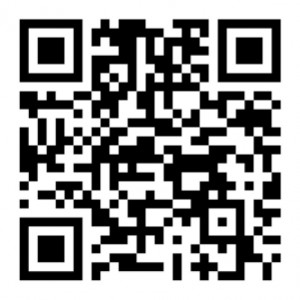Show and Tell is one of the oldest and most universal low-tech activities in teaching and learning. Although we tend to associate Show and Tell with the elementary classroom, much of what we do at higher levels is closely related to this tried-and-true technique, especially in the presentational mode. After all, Show and Tell replicates this natural form of communication through which culturally-rich information is shared within a community. Its performative aspect also makes it an excellent fit for the standards-based classroom where our focus is on what learners can do.
We work hard within the classroom to provide structure and support for our students to succeed. However, we don’t always take the next step of showcasing their successes more broadly. When it comes to sharing beyond the classroom what students can do (with parents, administrators, the community, and prospective students), a somewhat different approach is called for: Show but Don’t Tell. QR Codes (coded URLs that can be scanned by mobile devices) can be used in multiple ways to let visitors listen to, view, or read student work directly (without any need for explanation by the teacher), using their own device or one provided.
There are an increasing number of excellent online resources for using QR Codes in the classroom that can easily be adapted to all three modes. Our focus here, however, is to provide a few suggestions for using this high-tech tool to showcase your students’ low-tech oral and written presentational work (please note that these suggestion do not require regular student access to mobile devices in the classroom).
Following each activity below, you will need to capture the individual or group work in audio, video, or text form (or ask students to capture it). Then store it online (using Dropbox, for example) and convert the link to a QR Code using one of the many free generators available online. Don’t forget to secure the requisite permissions for any work that you share.
- Show and Tell with Classroom Objects: ask students to describe orally or in writing realia in the classroom (e.g., an artwork or other cultural artifact). Print out the QR Codes and attach them to the objects to create a permanent (or rotating) exhibit. (When students do Show and Tell with objects they bring in themselves, be sure to take a photo of the object, which you can then display next to a QR Code linking to the presentation.)
- Talking Library: assign brief oral or written reviews of books in your classroom. Print out the QR Codes and attach them to the spines or covers of books for easy browsing.
- Better Bulletin Boards: Add to the visual attraction of the bulletin boards in your classroom and hallways, by including QR Codes that passersby can scan to listen to or view your students’ oral work in addition to the other work by them that you have on display.
- Sequential Stories: Showcase stories written in groups by having each member of the group illustrate and read out loud one section of the story. Print out and number the QR Codes and display with the illustrations.
Recommended reading: An excellent starting point with tutorials, resources, and examples is Steven W. Anderson’s LiveBinder “QR Codes in the Classroom”.
[contact-form to=’anitaalkhas@gmail.com’][contact-field label=’Name’ type=’name’ required=’1’/][contact-field label=’Email’ type=’email’ required=’1’/][contact-field label=’Comment’ type=’textarea’ required=’1’/][/contact-form]


